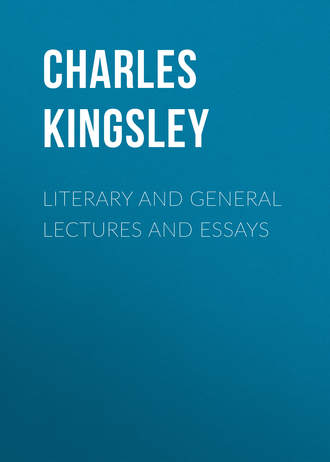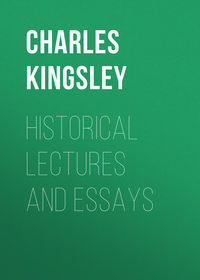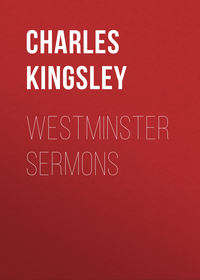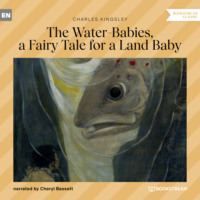 полная версия
полная версияLiterary and General Lectures and Essays
We ought to petition, also, for a volume which should contain the life of the Saviour, and the legends of the Virgin Mary; though this latter subject, we are afraid, will be too difficult for even Mrs. Jameson’s tact and delicacy to make tolerable to English readers, so thoroughly has the Virgin Mary, as especial patroness of purity, been intermixed in her legends with every form of prudish and prurient foulmindedness.7
The authoress has wisely abstained from all controversial matters. In her preface she begs that it may be clearly understood, “that she has taken throughout the æsthetic and not the religious view of these productions of art; which, in as far as they are informed with a true and earnest feeling, and steeped in that beauty which emanates from Genius inspired by Faith, may cease to be religion, but cannot cease to be poetry; and as poetry only,” she says, “I have considered them.” In a word, Mrs. Jameson has done for them what schoolmasters and schoolboys, bishops and Royal Academicians, have been doing for centuries, by Greek plays and Greek statues, without having incurred, as we said above, the slightest suspicion of wanting to worship heathen gods and goddesses.
Not that she views these stories with the cold unbelieving eye of a Goethe, merely as studies of “artistic effect;” she often transgresses her rule of impartiality, and just where we should wish her to do so. Her geniality cannot avoid an occasional burst of feeling, such as concludes her notice of the stories about the Magdalene and the other “beatified penitents.”
Poets have sung, and moralists and sages have taught, that for the frail woman there was nothing left but to die; or if more remained for her to suffer, there was at least nothing left for her to be or do—no choice between sackcloth and ashes and the livery of sin. The beatified penitents of the early Christian Church spoke another lesson—spoke divinely of hope for the fallen, hope without self-abasement or defiance. We, in these days, acknowledge no such saints; we have even done our best to dethrone Mary Magdalene; but we have martyrs—“by the pang without the palm”—and one, at least, among these who has not died without lifting up a voice of eloquent and solemn warning; who has borne her palm on earth, and whose starry crown may be seen on high even now amid the constellations of Genius.—Vol. ii. p. 386.
To whom the authoress may allude in this touching passage our simplicity cannot guess in the least. We may, therefore, without the suspicion of partiality, say to the noble spirit of purity, compassion, and true liberality which breathes throughout this whole chapter, “Go on and conquer.”
Nor again can Mrs. Jameson’s English honesty avoid an occasional slip of delicate sarcasm; for instance, in the story of St. Filomena, a brand-new saint, whose discovery at Rome, in 1802, produced there an excitement which we should suspect was very much wanted, which we recommend to all our readers as an instance of the state into which the virtues of honesty and common sense seem to have fallen in the Eternal City—of humbugs.
No doubt there are many such cases of imposture among the list of saints and martyrs; yet, granting all which have been exposed, and more, there still remains a list of authentic stories, sadder and stranger than any romance of man’s invention, to read which without deep sympathy and admiration our hearts must be callous or bigoted indeed. As Mrs. Jameson herself well says (vol. ii. p. 137):
When in the daily service of our Church we repeat these words of the sublime hymn (“The noble army of martyrs praise Thee!”), I wonder sometimes whether it be with a full appreciation of their meaning? whether we do really reflect on all that this noble army of martyrs has conquered for us? Did they indeed glorify God through their courage, and seal their faith in their Redeemer with their blood? And if it be so, how is it that we Christians have learned to look coldly upon the effigies of those who sowed the seed of the harvest which we have reaped?—Sanguis martyrum semen Christianorum! We may admit that the reverence paid to them in former days was unreasonable and excessive; that credulity and ignorance have in many instances falsified the actions imputed to them; that enthusiasm has magnified their numbers beyond all belief; that when the communion with martyrs was associated with the presence of their material remains, the passion for relics led to a thousand abuses, and the belief in their intercession to a thousand superstitions. But why, in uprooting the false, uproot also the beautiful and the true?
Thoroughly and practically convinced as we are of the truth of these words, it gave us some pain when, in the work of a very worthy person, “The Church in the Catacombs,” by Dr. Maitland (not the author of “The Dark Ages”), we found, as far as we could perceive, a wish “to advance the Protestant cause,” by throwing general doubt on the old martyrologies and their monuments in the Roman catacombs. If we shall have judged hastily, we shall be ready to apologise. None, as we have said before, more firmly believe that the Protestant cause is the good cause; none are more reverentially inclined toward all honest critical investigations, more anxious to see all truth, the Bible itself, sifted and tested in every possible method; but we must protest against what certainly seems too contemptuous a rejection of a mass of historic evidence hitherto undoubted, except by the school of Voltaire; and of the hasty denial of the meaning of Christian and martyrologic symbols, as well known to antiquaries as Stonehenge or Magna Charta.
At the same time, Dr. Maitland’s book seems the work of a righteous and earnest man, and it is not its object, but its method, of which we complain. The whole question of martyrology, a far more important one than historians generally fancy, requires a thorough investigation, critical and historical; it has to be done, and especially just now. The Germans, the civil engineers of the intellectual world, ought to do it for us, and no doubt will. But those who undertake it must bring to the work, not only impartiality, but enthusiasm; it is the spirit only, after all, which can quicken the eye, which can free the understanding from the idols of laziness, prejudice, and hasty induction. To talk philosophically of such matters a man must love them; he must set to work with a Christian sympathy, and a manly admiration for those old spiritual heroes to whose virtue and endurance Europe owes it that she is not now a den of heathen savages. He must be ready to assume everything about them to be true which is neither absurd, immoral, nor unsupported by the same amount of evidence which he would require for any other historic fact. And, just because this very tone of mind—enthusiastic but not idolatrous, discriminating but not captious—runs through Mrs. Jameson’s work, we hail it with especial pleasure, as a fresh move in a truly philosophic and Christian direction. Indeed, for that branch of the subject which she has taken in hand, not the history, but the poetry of legends and of the art which they awakened, she derives a peculiar fitness, not merely from her own literary talents and acquaintance with continental art, but also from the very fact of her being an English wife and mother. Women ought, perhaps, always to make the best critics—at once more quicksighted, more tasteful, more sympathetic than ourselves, whose proper business is creation. Perhaps in Utopia they will take the reviewer’s business entirely off our hands, as they are said to be doing already, by-the-bye, in one leading periodical. But of all critics an English matron ought to be the best—open as she should be, by her womanhood, to all tender and admiring sympathies, accustomed by her Protestant education to unsullied purity of thought, and inheriting from her race, not only freedom of mind and reverence for antiquity, but the far higher birthright of English honesty.
And such a genial and honest spirit, we think, runs through this book.
Another difficult task, perhaps the most difficult of all, the authoress has well performed. We mean the handling of stories whose facts she partly or wholly disbelieves, while she admires and loves their spirit and moral; or doctrines, to pronounce on whose truth or falsehood is beyond her subject. This difficulty Mr. Newman, in the “Lives of the English Saints,” edited and partly written by him, turned with wonderful astuteness to the advantage of Romanism; but others, more honest, have not been so victorious. Witness the painfully uncertain impression left by some parts of one or two of those masterly articles on Romish heroes which appeared in the “Quarterly Review;” an uncertainty which we have the fullest reason to believe was most foreign to the reviewer’s mind and conscience. Even Mr. Macaulay’s brilliant history here and there falls into the same snare. No one but those who have tried it can be aware of the extreme difficulty of preventing the dramatic historian from degenerating into an apologist or heating into a sneerer; or understand the ease with which an earnest author, in a case like the present, becomes frantically reckless, under the certainty that, say what he will, he will be called a Jesuit by the Protestants, an Infidel by the Papists, a Pantheist by the Ultra-High-Church, and a Rogue by all three.
Now, we certainly shall not say that Mrs. Jameson is greater than the writers just mentioned; but we must say, that female tact and deep devotional feeling cut the Gordian knot which has puzzled more cunning heads. Not that Mrs. Jameson is faultless; we want something yet, in the telling of a Christian fairy-tale, and know not what we want: but never were legends narrated with more discernment and simplicity than these.
As an instance, take the legend of St. Dorothea (vol. ii. p. 184), which is especially one of those stories of “sainted personages who,” as Mrs. Jameson says, “lived, or are supposed to have lived, in the first ages of Christianity: and whose real history, founded on fact or tradition, has been so disguised by poetical embroidery, that they have in some sort the air of ideal beings;” and which may, therefore, be taken as a complete test of the authoress’s tact and honesty:
In the province of Cappadocia and in the city of Cæsarea, dwelt a noble virgin, whose name was Dorothea. In the whole city there was none to be compared to her in beauty and grace of person. She was a Christian, and served God day and night with prayers, with fasting, and with alms.
The governor of the city, by name Sapritius (or Fabricius), was a very terrible persecutor of the Christians, and hearing of the maiden, and of her great beauty, he ordered her to be brought before him. She came, with her mantle folded on her bosom, and her eyes meekly cast down. The governor asked “Who art thou?” and she replied: “I am Dorothea, a virgin, and a servant of Jesus Christ.” He said: “Thou must serve our gods, or die.” She answered mildly: “Be it so; the sooner shall I stand in the presence of Him whom I most desire to behold.” Then the governor asked her: “Whom meanest thou?” She replied: “I mean the Son of God, Christ, mine espoused! his dwelling is paradise; by his side are joys eternal; and in his garden grow celestial fruits and roses that never fade.” Then Sapritius, overcome by her eloquence and beauty, ordered her to be carried back to her dungeon. And he sent to her two sisters, whose names were Calista and Christeta, who had once been Christians, but who, from terror of the torments with which they were threatened, had renounced their faith in Christ. To these women the governor promised large rewards if they would induce Dorothea to follow their evil example; and they, nothing doubting of success, boldly undertook the task. The result, however, was far different; for Dorothea, full of courage and constancy, reproved them, as one having authority, and drew such a picture of the joys they had forfeited through their falsehood and cowardice, that they fell at her feet, saying: “O blessed Dorothea, pray for us, that, through thy intercession, our sins may be forgiven and our penitence accepted!” And she did so. And when they had left the dungeon they proclaimed aloud that they were servants of Christ.
Then the governor, furious, commanded that they should be burned, and that Dorothea should witness their torments. And she stood by, bravely encouraging them, and saying: “O my sisters, fear not! suffer to the end! for these transient pangs shall be followed by the joys of eternal life!” Thus they died: and Dorothea herself was condemned to be tortured cruelly, and then beheaded. The first part of her sentence she endured with invincible fortitude. She was then led forth to death; and, as she went, a young man, a lawyer of the city named Theophilus, who had been present when she was first brought before the governor, called to her mockingly: “Ha! fair maiden, goest thou to join thy bridegroom? Send me, I pray thee, of the fruits and flowers of that same garden of which thou hast spoken: I would fain taste of them!” And Dorothea looking on him inclined her head with a gentle smile, and said: “Thy request, O Theophilus, is granted!” Whereat he laughed aloud with his companions; but she went on cheerfully to death.
When she came to the place of execution, she knelt down and prayed; and suddenly appeared at her side a beautiful boy, with hair bright as sunbeams:
A smooth-faced glorious thing,With thousand blessings dancing in his eyes.In his hand he held a basket containing three apples, and three fresh-gathered and fragrant roses. She said to him; “Carry these to Theophilus; say that Dorothea hath sent them, and that I go before him to the garden whence they came, and await him there.” With these words she bent her neck, and received the death-stroke.
Meantime the angel (for it was an angel) went to seek Theophilus, and found him still laughing in merry mood over the idea of the promised gift. The angel placed before him the basket of celestial fruit and flowers, saying: “Dorothea sends thee this,” and vanished. What words can express the wonder of Theophilus? Struck by the prodigy operated in his favour, his heart melted within him; he tasted of the celestial fruit, and a new life was his; he proclaimed himself a servant of Christ, and, following the example of Dorothea, suffered with like constancy in the cause of truth, and obtained the crown of martyrdom.
We have chosen this legend just because it is in itself as superstitious and fantastic as any in the book. We happen to hold the dream of “The Spiritual Marriage,” as there set forth, in especial abhorrence, and we have no doubt Mrs. Jameson does so also. We are well aware of the pernicious effect which this doctrine has exercised on matrimonial purity among the southern nations; that by making chastity synonymous with celibacy, it degraded married faithfulness into a restriction which there were penalties for breaking, but no rewards for keeping. We see clearly enough the cowardice, the shortsightedness, of fancying that man can insure the safety of his soul by fleeing from the world—in plain English, deserting the post to which God has called him, like the monks and nuns of old. We believe that the numbers of the early martyrs have been exaggerated. We believe that they were like ourselves, imperfect and inconsistent human beings; that, on the showing of the legends and fathers themselves, their testimony for the truth was too often impaired by superstition, fanaticism, or passion. But granting all this, we must still say, in the words of one who cannot be suspected of Romanising—the great Dr. Arnold—
Divide the sum total of reported martyrs by twenty; by fifty, if you will; after all, you have a number of persons of all ages and sexes suffering cruel torments and deaths for conscience’ sake, and for Christ’s; and by their sufferings, manifestly with God’s blessing, insuring the triumph of Christ’s Gospel. Neither do I think that we consider the excellence of this martyr spirit half enough.
Indeed we do not. Let all the abatements mentioned above, and more, be granted; yet, even then, when we remember that the world from which Jerome or Anthony fled was even worse than that denounced by Juvenal and Persius—that the nuptials which, as legends say, were often offered the virgin martyrs as alternatives for death, were such as employed the foul pens of Petronius and Martial—that the tyrants whom they spurned were such as live in the pages of Suetonius, and the Augustæ Historiæ Scriptores—that the gods whom they were commanded to worship, the rites in which they were to join, were those over which Ovid and Apuleius had gloated, which Lucian had held up to the contempt of heathendom itself—that the tortures which they preferred to apostacy and to foul crimes were, by the confessions of the heathens themselves, too horrible for pen to tell—it does raise a flush of indignation to hear some sleek bigot-sceptic, bred up in the safety and luxury of modern England, among Habeas Corpus Acts and endowed churches, trying from his warm fireside to sneer away the awful responsibilities and the heroic fortitude of valiant men and tender girls, to whose piety and courage he owes the very enlightenment, the very civilisation, of which he boasts.
It is an error, doubtless, and a fearful one, to worship even such as them. But the error, when it arose, was at worst the caricature of a blessed truth. Even for the sinful, surely it was better to admire holiness than to worship their own sin. Shame on those who, calling themselves Christians, repine that a Cecilia or a Magdalen replaced an Isis and a Venus; or who can fancy that they are serving Protestantism by tracing malevolent likenesses between even the idolatry of a saint and the idolatry of a devil! True, there was idolatry in both, as gross in one as the other. And what wonder? What wonder if, amid a world of courtesans, the nun was worshipped? At least God allowed it; and will man be wiser than God? “The times of that ignorance He winked at.” The lie that was in it He did not interfere to punish. He did more; He let it work out, as all lies will, their own punishment. We may see that in the miserable century which preceded the glorious Reformation; we may see it in the present state of Spain and Italy. The crust of lies, we say, punished itself; to the germ of truth within it we partly owe that we are Christian men this day.
But granting, or rather boldly asserting all this, and smiling as much as we choose at the tale of St. Dorothea’s celestial basket, is it not absolutely, and in spite of all, an exquisite story? Is it likely to make people better or worse? We might believe the whole of it, and yet we need not, therefore, turn idolaters and worship sweet Dorothea for a goddess. But if, as we trust in God is the case, we are too wise to believe it all—if even we see no reason (and there is not much) for believing one single word of it—yet still we ask, Is it not an exquisite story? Is there not heroism in it greater than of all the Ajaxes and Achilles who ever blustered on this earth? Is there not power greater than of kings—God’s strength made perfect in woman’s weakness? Tender forgiveness, the Saviour’s own likeness; glimpses, brilliant and true at the core, however distorted and miscoloured, of that spiritual world where the wicked cease from troubling, where the meek alone shall inherit the earth, where, as Protestants too believe, all that is spotless and beautiful in nature as well as in man shall bloom for ever perfect?
It is especially in her descriptions of paintings that Mrs. Jameson’s great talents are displayed. Nowhere do we recollect criticisms more genial, brilliant, picturesque than those which are scattered through these pages. Often they have deeper merits, and descend to those fundamental laws of beauty and of religion by which all Christian art must ultimately be tested. Mrs. Jameson has certainly a powerful inductive faculty; she comprehends at once the idea8 and central law of a work of art, and sketches it in a few vivid and masterly touches; and really, to use a hack quotation honestly for once, “in thoughts which breathe, and words which burn.” As an instance, we must be allowed to quote at length this charming passage on angel paintings, so valuable does it seem not only as information, but as a specimen of what criticism should be:
On the revival of art, we find the Byzantine idea of angels everywhere prevailing. The angels in Cimabue’s famous “Virgin and Child enthroned” are grand creatures, rather stern, but this arose, I think, from his inability to express beauty. The colossal angels at Assisi, solemn sceptred kingly forms, all alike in action and attitude, appeared to me magnificent.
In the angels of Giotto we see the commencement of a softer grace and a purer taste, further developed by some of his scholars. Benozzo Gozzoli and Orcagna have left in the Campo Santo examples of the most graceful and fanciful treatment. Of Benozzo’s angels in the Ricardi Palace I have spoken at length. His master, Angelico (worthy the name!), never reached the same power of expressing the rapturous rejoicing of celestial beings, but his conception of the angelic nature remains unapproached, unapproachable: it is only his, for it was the gentle, passionless, refined nature of the recluse which stamped itself there. Angelico’s angels are unearthly, not so much in form as in sentiment; and superhuman, not in power but in purity. In other hands, any imitation of his soft ethereal grace would become feeble and insipid. With their long robes falling round their feet, and drooping many-coloured wings, they seem not to fly or to walk, but to float along, “smooth sliding without step.” Blessed blessed creatures! love us, only love us! for we dare not task your soft serene beatitude, by asking you to help us!
There is more sympathy with humanity in Francia’s angels: they look as if they could weep as well as love and sing.
* * * * *Correggio’s angels are grand and lovely, but they are like children enlarged and sublimated, not like spirits taking the form of children; where they smile it is truly—as Annibal Caracci expresses it—con una naturalezza et simplicità che innamora e sforza a ridere con loro: but the smile in many of Correggio’s angel heads has something sublime and spiritual, as well as simple and natural.
And Titian’s angels impress me in a similar manner—I mean those in the glorious “Assumption” at Venice—with their childish forms and features, but an expression caught from beholding the face of “our Father that is in heaven:” it is glorified in fancy. I remember standing before this picture, contemplating those lovely spirits, one after another, until a thrill came over me like that which I felt when Mendelssohn played the organ—I became music while I listened. The face of one of those angels is to the face of a child just what that of the Virgin in the same picture is compared with the fairest of the daughters of earth: it is not here superiority of beauty, but mind, and music, and love kneaded, as it were, into form and colour.
But Raphael, excelling in all things, is here excellent above all; his angels combine in a higher degree than any other, the various faculties and attributes in which the fancy loves to clothe these pure, immortal, beatified creatures. The angels of Giotti, of Benozzo, of Fiesole, are, if not female, feminine; those of Filippo Lippi and of Andrea, masculine; but you cannot say of those of Raphael, that they are masculine or feminine. The idea of sex is wholly lost in the blending of power, intelligence, and grace. In his early pictures, grace is the predominant characteristic, as in the dancing and singing angels in his “Coronation of the Virgin.” In his later pictures the sentiment in his ministering angels is more spiritual, more dignified. As a perfect example of grand and poetical feeling, I may cite the angels as “Regents of the Planets,” in the Capella Chigiana. The cupola represents in a circle the creation of the solar system, according to the theological and astronomical (or rather astrological) notions which then prevailed—a hundred years before “the starry Galileo and his woes.” In the centre is the Creator; around, in eight compartments, we have, first, the angel of the celestial sphere, who seems to be listening to the divine mandate: “Let there be light in the firmament of heaven;” then follow in their order, the Sun, the Moon, Mercury, Venus, Mars, Jupiter, and Saturn. The name of each planet is expressed by its mythological representative; the Sun by Apollo, the Moon by Diana: and over each presides a grand colossal-winged spirit, seated or reclining on a portion of the zodiac as on a throne. I have selected two angels to give an idea of this peculiar and poetical treatment. The union of the theological and the mythological attributes is in the classical taste of the time, and quite Miltonic. In Raphael’s child-angels, the expression of power and intelligence, as well as innocence, is quite wonderful; for instance, look at the two angel-boys, in the Dresden Madonna di San Sisto, and the angels, or celestial genii, who bear along the Almighty when he appears to Noah. No one has expressed like Raphael the action of flight, except perhaps Rembrandt. The angel who descends to crown Santa Felicità cleaves the air with the action of a swallow: and the angel in Rembrandt’s Tobit soars like a lark with upward motion, spurning the earth.











